A brief history of the Yellow Pages directory
Before mobile phones and Google searches, the telephone directory was one of the only places people could find contact information for businesses and individuals. The July 1883 Ontario Department Directory contained one of the earliest telephone directories – where all listings appeared under business categories (flower mills, opticians, druggist, etc). To find a residential listing, a person would have to look under “R” for residence. However, the Ontario Department Directory was unique in this approach - before 1909, all other directories were organized alphabetically, without subcategories.

The first edition of the Yellow Pages appeared in 1909 and was printed on yellow paper (though pink was used occasionally). The most common theory on why yellow is that it happened to be the most readily available colour. It was nearly 40 years later that Bell registered ‘Yellow Pages’ as a trademark, in 1948.
In 1920, Bell took control over the sale of advertising in the Yellow Pages. Until that time, ad sales were done by an outside agency, due to the high costs involved. Overseen by Bell’s Special Agent Department, business customers received free classified listings along with the opportunity to purchase advertising space.
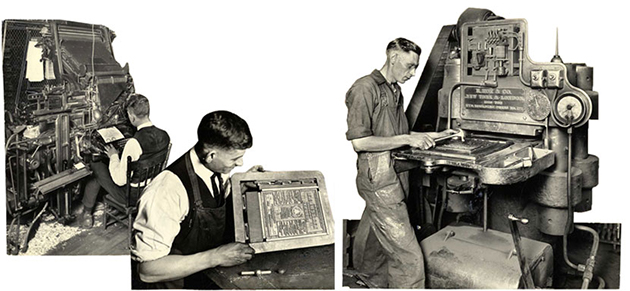
By 1935, there was considerable promotion in the Yellow Pages. Bell’s advertisements depicted the many services telephone users could take advantage of by simply glancing through the classified section.
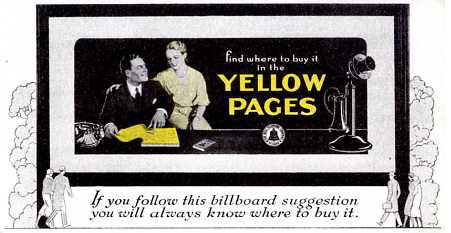
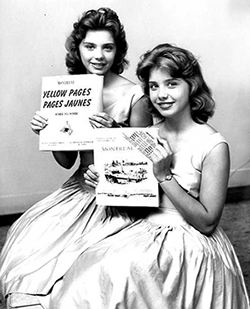
In 1943, the federal government asked companies to limit the use of paper, among other supplies, as part of the war effort. To achieve this, Bell added a fourth column to the Yellow Pages and the Sales group could not sell advertisements that were bigger in height than one quarter of a column.
Growing urbanization after the war meant directories increased in size until a single directory could not contain both residential alphabetical and classified business sections. The Montréal directory was the first to split into separate White and Yellow Pages books in 1958. Toronto followed in 1961.
Throughout the 20th century, giveaways and full-scale advertising were a big part of Yellow Pages’ promotional activities. During World War II, subscribers were invited to contribute to the war effort as the Canadian Red Cross distributed knitting instructions through the Yellow Pages. A soft drink cap, memo and bridge scoring pads, as well as doorhangers, were among the giveaway items that were distributed. The Yellow Pages logo could also be seen on parade floats, city buses and hot air balloons.
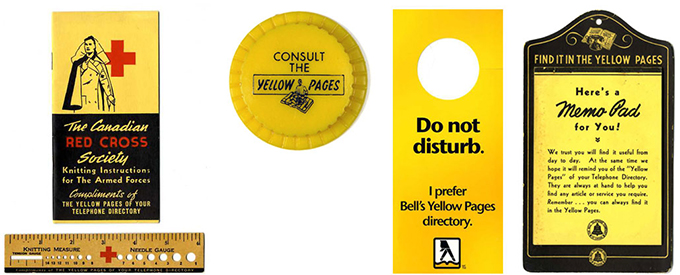
The 1980s and beyond saw several important innovations in the classified directory business. Bell’s editing company, Télé-Direct, launched the Electronic Yellow Pages, a database providing information and descriptions of multiple Canadian companies and industries. Subscribers could also send a direct email to a potential supplier. As part of Bell’s environmental initiatives, all discarded telephone directories were put to good use. For example, grocery chain Loblaws added ‘Yellow Pages Jumbo towels’, made from 33% recycled telephone books, to its line of environmentally friendly products. In the early 2000s, Canadians could take advantage of colourful peel-off coupons they could use to redeem free products from local suppliers.
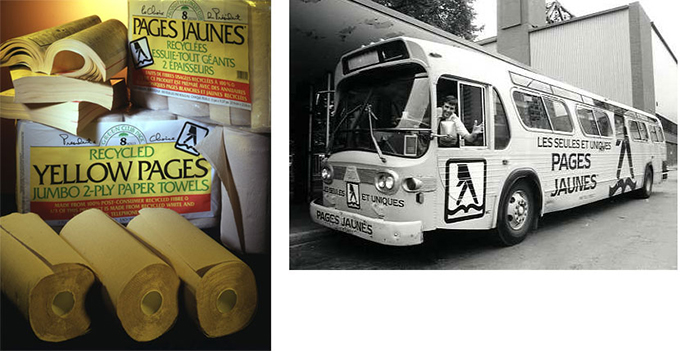
In 2002, Bell sold its directory business to the Yellow Pages Group.